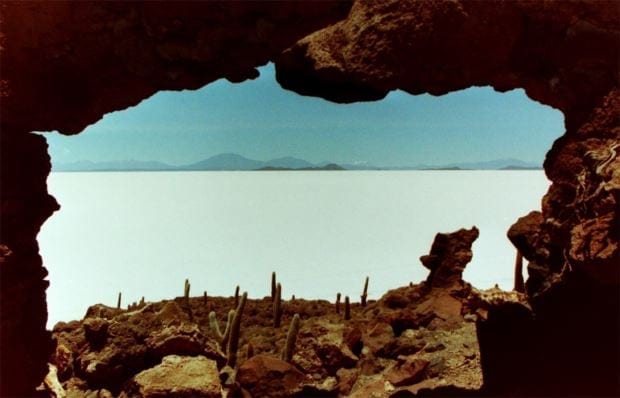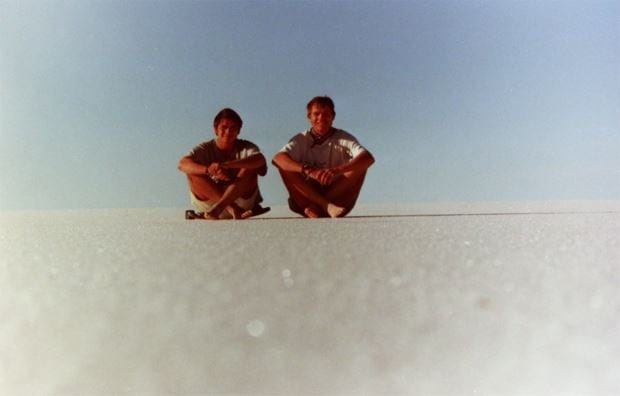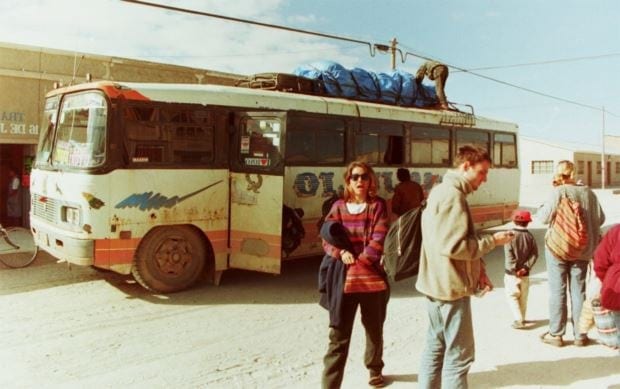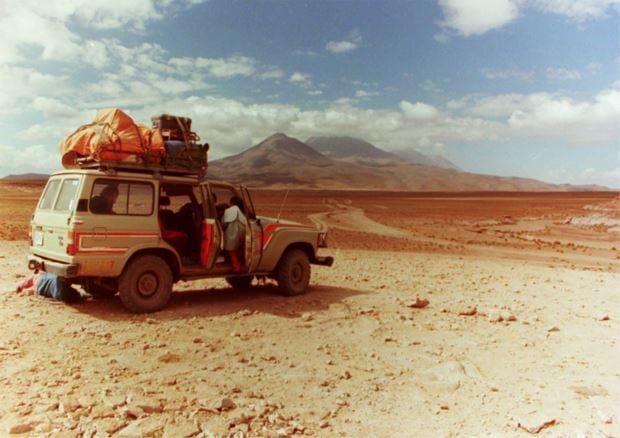
23 Jan OFF THE BEATEN TRACK: Bolivia Part 1: Salar de Uyuni
There are commercial means of travelling from Bolivia to Chile, and then there is the Salar De Uyuni traverse.
Bolivia is a South American landlocked nation surrounded by Peru, Paraguay, Argentina, Brazil and Chile. With such diverse terrain spanning the Andes Mountains, the Atacama Desert and the Amazon basin it promotes an epilogue of adventure travel for those who wish for a hardened existence but enriched experience with the indigenous Quechuan and Aymaran people.

Steve and Ian Robinson: limitless vast Salt Lake of Salar de Uyuni
Deep to the South of the capital La Paz, lies a desolate outreach called Uyuni. The only mode of transport to this isolated and desolated settlement was a dilapidated bus that sheathed a small Bolivian community of local Quechuans over a corrugated bush track for 13 hours from Oruro.
Our presence on the bus fashioned a curious sight to the locals, as was the rain that fell on the parched earth of the Atacama Desert which generated an earthy impoverished aroma comparable to the breaking of a 100-year drought. More amusing was how the rain fell through the roof of the bus creating a need to internalise umbrellas in order to spare a few passengers, but heeded in pushing the rain onto companions which caused tribal murmurings of revolt and umbrella sabotage.

Arriving at Uyuni after an all-night haul across the desert
The arrival at Uyuni beckoned only the beginning of what can only be described as an inimitable experience. Our traverse by 4WD would take 4 days to cross the scalding salt pans, volcanic ruptures and desert landscapes, across the imaginary national Chilean border and straight into a most unexpected cholera outbreak within the quant municipality of San Pedro.
But the journey endured a landscape that was absolute in its empowerment to approbate awe and wonderment beyond the physical wanderings of our imagination. The limitless purity of the salt-lake would disappear into a dancing mirage of mountains and bewilderment and the enormity would almost dignify our mortality against its eternity.

Continual breakdowns kept the birds of prey circling
The landscape also came with a grounding realisation that there was no cover for anyone who had fallen foul of devouring a rotten chicken wing. I humbly denounce that I have desecrated this ancient and sacred site for the extrication of salmonella and the devil it possessed. But harbour this, I would have crawled on hands and knees to the mountainous foothills for the sake of scenic preservation if it wasn’t for the fire of a 1000 suns reflecting off the salt pans directly into my retinas as I heaved for reprieve and salvation.
Misgivings aside, our footprints were akin to the Apollo landings and under a full moon we attempted to scale the Jurassic volcanic relic of Volcan Tunupa (5,300m). Memorised from the chill of pre-dawn light at 17,000 feet, the Salar far below transformed into an arctic wasteland with the islands becoming mountain tops breaking through the glaciated wilderness. This moment was only surpassed later by immersing ourselves in volcanic thermal hot springs to shed the dusting of fatigue and scorch the night’s desert chill.
 Isla de Pescadores: The Island of Fisherman
Isla de Pescadores: The Island of Fisherman
Salar de Uyuni is 12,000km2 (or 130km by 140km) with its skyline ruptured by prehistoric volcanoes, stone villages and ancient traditions. Population was sparse to non-existent and self-sufficiency was mandatory. Dinner was simple and by candle light. Sopa then pollo, arrozz, papa frita’s and café. Life was even more simple beyond the mechanisation of our metabolism. It was about being in the moment and nothing more.
Beauty is trademarked in this land of stark contrasts and extremes. If you truly want an “off the beaten track” experience, simulate life out on the Salar de Uyuni.



Sorry, the comment form is closed at this time.